(Extract from the MMFA leaflet – TM underlay materials under MMF floor coverings, www.mmfa.eu)
New standards for quality assessment
This technical data sheet contains general information and application-orientated recommendations for loose laid underlay materials under floating multilayer modular floor coverings with a minimum thickness of 4 mm. It does not refer to products with “integrated underlays” or to areas with special requirements and specifications for the application. In any case, the existing legal requirements of the country or area in which the products are purchased must be observed.
The explanations and data contained in this technical data sheet correspond to the state of the art and the relevant recognised regulations at the time of publication.
This technical bulletin identifies application-oriented requirements and the technical performance indicators to assess whether the underlay fulfils the intended purpose of the flooring system.
In general, the entire flooring system – in other words, the combination of multilayer modular flooring with underlay – must be selected to fulfil the requirements of the specific application.
By complying with all the minimum recommendations specified in this technical data sheet for underlays, you will reduce the risk of product damage (e.g. damage to the connection system) to the floor covering. These recommendations are based on the current state of knowledge. They enable you to minimise potential complaints within the warranty period.
For floating installation of multilayer modular floor coverings, an underlay can be provided between the subfloor and the floor covering. This underlay offers various additional advantages for the flooring system. Not only does the underlay reduce the need for extensive preparation of the subfloor, but they also provide additional protection for the flooring, resulting in a satisfactory, long service life.
Country-specific legal requirements are binding and must always be observed.
Please note that the information provided by your flooring manufacturer or supplier regarding the requirements for the use of their underlay is binding.
All minimum requirements have been developed for an assumed normal domestic use over a period of 20 years and cover 95% of this type of flooring.
Multilayer modular floor coverings for floating installation are categorised by the MMFA as follows
These different categories require specific underlays (e.g. depending on the stiffness, elasticity, etc. of the floor covering).
There are two groups of underlays. Typically, underlay group 1 can be used under floor coverings in the “Wood” category, and underlay group 2 under floor coverings in the “Polymer” or “Mixed” category.
The underlay group required is specified by the supplier of the floor covering. If the supplier does not specify an underlay group, group 2 is recommended.
Chapter 5 specifies the minimum or higher requirements for each of the performance characteristics listed below to ensure the durability of the technical performance in areas of light or heavy use (e.g. living rooms, corridors, kitchens, etc.) over the lifetime of the floor covering. These requirements are intended as a rough guide to help consumers select the underlay for their specific application and to identify and determine the appropriate flooring/underlay combinations.
For floor coverings with a service class of 31 or higher (according to EN 16511, EN ISO 20326, EN 17142 or EN ISO 10582), underlays that fulfil the higher requirements are recommended.

Impact sound is defined as the noise that is perceived in the room under or next to the flooring system. This noise can be generated by footsteps, falling objects, etc. The IS value is the reduction of the noise generated on the same subfloor with and without the flooring system. The underlay must be tested in combination with the reference floor covering, as a simple extrapolation of underlay and floor covering is not possible. The higher the IS value, the better the underlay – in combination with the floor covering – will reduce the transmitted sound.
The floor covering has a significant influence on the IS value of the floor covering system. It must be stated whether the test of the system was carried out in relation to a Group 1 floor based on an HDF underlay (see A.2.1) and/or in relation to a Group 2 floor using an LVT underlay (see A.2.2). Therefore, the IS value must be expressed as ISHDF and/or ISLVT
Minimum requirement: ISLVT ≥ 10 dB
Higher requirement: ISLVT ≥ 18 dB
Minimum requirement: ISLVT ≥ 10 dB
Higher requirement: ISLVT ≥ 18 dB
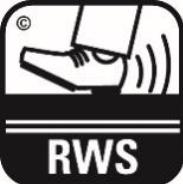
Walking noise is the noise that is perceived when the MMF floor covering is used in the room itself (e.g. when walking on it, playing on it, etc.). EN 16205 describes a test method with which the “perceived loudness” of an MMF floor covering can be reproduced using the RWS value (EN 16205/Annex E).
The RWS value indicates the noise emission of the floor covering system. The underlay must be tested in combination with the floor covering, as a simple extrapolation of underlay and floor covering is not possible.
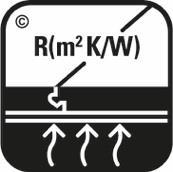
Underfloor heating/cooling (Rλ,B)
In general, LVT floors are suitable for use on hot water underfloor heating/cooling systems. In order for the underfloor heating/cooling to work efficiently, the underlay should have the lowest possible thermal insulation, i.e. the total sum of underlay and floor (Rλ,B) should be as low as possible. Maximum permissible R value of the entire floor:
Underfloor heating: R ≤ 0,15 m²K/W
Underfloor cooling: R ≤ 0,10 m²K/value
Thermal insulation (Rλ)
LVT floors have relatively low thermal insulation. On unheated subfloors, an underlay with a high thermal resistance (Rλ) can significantly increase the thermal insulation properties of the flooring system. This increases the surface temperature.
Minimum requirement (underlay only): Rλ ≥ 0,075 m²K/W
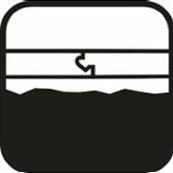
The substrate must comply with MMFA Technical Data Sheet TB2.
Minor localised unevenness such as grain sizes in the screed can be levelled out by using suitable underlays. Larger unevenness must be levelled out by appropriate measures (e.g. with a levelling compound or similar). MMF floor coverings are critical with regard to unevenness in the subfloor. For example, gaps between the tiles or cracks on the surface may appear after some time. Unevenness can also put too much strain on the connection systems.
The ability to compensate for the above-mentioned minor localised unevenness is expressed by the PC value. This value is always given in mm.
Minimum requirement: PC ≥ 0,5 mm
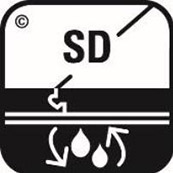
Moisture protection is mandatory for mineral substrates in order to prevent damage to the floor. Protection against rising damp can be achieved with an additional vapour barrier or an appropriately equipped underlay. The higher the SD value (water vapour diffusion resistance), the lower the moisture permeability. If the subfloor has increased residual moisture, suitable drying measures must be taken before the floor is laid. In the case of wooden subfloors (floorboards, chipboard, etc.), care must be taken to ensure that the equilibrium moisture content of the subfloor is not disturbed at any time of the year, i.e. that moisture transport through the floor is not impeded. As a result, no moisture protection film may be used between the wooden floor construction and the floating LVT floor.
Minimum requirement: SD ≥ 75 m
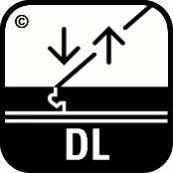
he dynamic load is the pressure that is applied to the flooring system by foot traffic, chair castors, trolleys, etc. The underlay must be able to “absorb” these repeated loads of short duration without losing its absorbent performance in the long term.
This ability is expressed by the DL value. The underlay is briefly subjected to a defined load and then released again. This cycle is repeated with a defined frequency. The DL value corresponds to the number of cycles after which a reduction in underlay thickness of 0.5 mm is achieved.
Minimum requirement 10’000 cycles
Higher requirement: 100’000 cycles
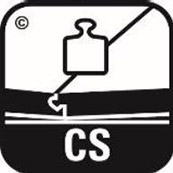
Permanent static loads on the floor covering, such as the floor covering’s own weight or heavy furniture placed on the floor (e.g. cupboard, piano, aquarium, etc.) can cause the thickness of the underlay to decrease over time. The compressive strength (CS) corresponds to the force required to compress the underlay by a thickness of 0.5 mm. The compressive creep (CC) evaluates the load that can be applied to the flooring system over a reference period of 10 years until a compression of 0.5 mm is reached.
CS
Severe deformation could lead to irreparable damage to the connection system and/or the backing layer. This test determines the load that must be applied to the joint between the floor covering elements in order to compress the floor covering by 0.5 mm.
Minimum requirement: 200 kPa at 0.5 mm
Higher requirement: 400 kPa
CC
If an underlay is compressed by the static load over time, all advantageous technical features such as sound and thermal insulation, levelling ability, etc. may be lost.
Minimum requirement: 10 kPa with 0.5 mm compression
Higher requirement: 35 kPa
With regard to environmental and safety issues, the following aspects may be relevant. Some of these aspects are regulated by national or EU laws/building regulations.
For example, in Germany, general building authority approval is currently required for underlay materials with regard to VOC (volatile organic compound) emissions and fire behaviour, and in France, underlay materials must be labelled according to certain VOC emission categories.
Relevant environmental and safety aspects are:
These are currently being processed as part of European standardisation projects (Construction Products Directive).